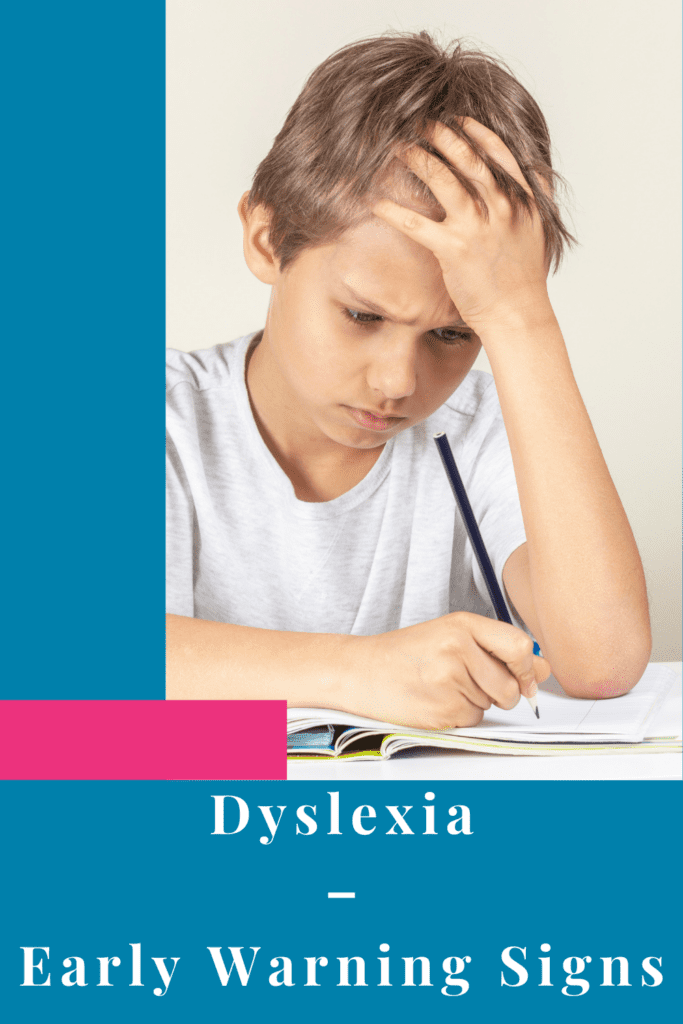The signs were all there…
When I first meet with parents and I am taking their child’s early development history – Mom will often say one of two things:
“I had a feeling all along.”
But…
Everyone told her she was over-analysing.
…or “I wish I had known.”
She wished she had known that certain signs were red flags like hardly creeping or barely crawling could result in incomplete brain development.
She wished she had known that constant ear infections could cause problems with poor auditory processing and a deficit with phonemic awareness. She wished she had known that picky eating and nutritional deficiencies could have serious impacts on visual processing and processing sounds.
Why ‘Too Early to Test’ is a System Failure
My biggest frustration is when parents tell me their child has always struggled with reading – often for years, but when their child was young they were told it was too early to test for dyslexia or a reading disorder.
Often kids are in grade 4 or 5 when it has now become impossible to deny that there is some kind of reading disorder. At this point, the child is usually behind several reading levels compared to their peers.
Moms always worry that their child will miss out on so many opportunities to live their dreams or live a happy, comfortable life when their child can barely read. Her heart breaks when she sees her child’s self-confidence slipping away with every passing school day.
What’s most frustrating is that when I begin the screening process, and the client history, the signs were usually present from the start.
And let me be honest. There is no excuse.
This is a system failure.
The National Institute of Child Health and Human Development asserts that “dyslexia is identifiable with 92% accuracy by age 5.5”.
In private schools and in public schools in only one state, children are screened for dyslexia between the ages of 5-6.
Every single expert on dyslexia and reading disorders is aware of this fact and yet even in grades 3 and 4, many parents find themselves fighting to get a diagnosis.
If there was a suggestion when their child was younger that there could be a problem, many a mother has told me, “but they wouldn’t test because they said it’s too early to tell.”
Too early to tell? Waiting until a child is drowning in a reading disorder is like waiting until someone has a heart attack to say we should look for signs of heart disease.
The research shows that “it takes four times as long to intervene in fourth grade as it does in late kindergarten.” 1
Dyslexia – It’s All About Early Detection
The sooner a child is screened and an effective intervention takes place – the sooner a child will be reading fluently with little impact to their self-esteem or academics.
There are numerous reasons why a child is dyslexic or has a reading disorder– and it almost always starts during early development.
There is definitely a genetic component BUT it is not strong enough to be a ‘stand-alone’. See my previous article on some of the ’causes’ of dyslexia.
The key aspect is to identify what signs should parents of young children be aware of that could be indications of dyslexia or another type of reading disorder.
Both insufficient sensory-motor stimulation which can result in incomplete brain development as well chronic infections increases a child’s risk of developing a reading disorder (as well as learning disabilities and even ADHD).
Possible Signs of Dyslexia in Pre-School Children
In the early years of development meaning before kindergarten, watch for these signs:
Physical:
- Skipped or barely rolled over, creeped, crawled etc. Early walker or ‘bum-shuffled’ instead of crawled.
- ‘Lazy eye’, poor eye-tracking or eye-teaming (not always obvious)
- Family history of dyslexia or poor spelling
- History of ear infections or chronic infections in general
- Hearing problems
- History of antibiotics
Language:
- Late talker, limited vocabulary or trouble finding words when speaking
- Difficulty pronouncing words, i.e., busgetti for spaghetti, mawn lower for lawn mower, uses baby talk
- Speech problems or speech impediment
- Not interested in rhymes or making the rhyming patterns like cat, bat, rat
- Uses shorter sentences than other children
- Not interested in speaking
- Hard time forming words, such as reversing sounds in words
Sensory-Motor & Mixed dominance:
- Hard time learning to tie shoes
- Difficulty with distinguishing right and left
- Poor fine motor skills
- Sensory processing issues – overly sensitive to sounds or textures like food as well as seams, tags etc OR is sensory seeking meaning he seeks contact, pressure, and may not realise her own strength
- Prone to accidents, clumsy, poor balance, dyspraxia
- Impulsive, fidgety
Processing:
- Trouble following a series of instructions or with planning
- Difficulty with remembering the correct sequence of events in a story or situation
- Problems remembering or naming letters, numbers and color
- More dependent on memorization
Pre-School/Kindergarten
- Hard time learning letters in alphabet or recognizing letters in his or her own name
- Difficulty learning numbers, colors, days of the week, shapes
- Difficulty learning how to spell and write his or her name
Early intervention is key. It is unfortunate that members of office do not realise that it is definitely not cheaper to delay screening and treatment.
The public pays in ongoing educational and social services when a child can’t read well. Likewise, parents who delayed often had to spend far more money on intensive interventions than they would have had to spend if their child had been screened early.
The sooner we address incomplete brain development, poor auditory and visual processing as well as weak phonemic awareness and even how poor nutrition can fuel to reading deficits, the less likely a child will suffer the consequences of living with the stigma of a reading disorder.
The Brain Can be Trained & Can Change
When potential reading disorders are caught early, there are numerous exercises and therapies that can help to reverse their development.
These exercises extend far beyond reading together and practicing phonics. They must begin at the earliest level of brain development to create a whole-brained learner.
Sensory motor stimulation, exercises that stimulate the auditory and visual systems, the left and right sides of the brain, front to back, top to bottom as well as phonological awareness is at the heart of curbing a reading disorder.
While early intervention is best – it is important to remember – it is never too late to learn how to read well.
Reading Rockstar Bootcamp both assesses and addresses the root cause of why your child is falling behind their peers in reading. The program is a 6-Month Reading Intervention that focuses on strengthening weak connections in the brain and ensuring the brain is getting the nutrition it needs to function and learn optimally.
If you want to learn more about how you can help your child move beyond the limitations of IEP’s, medication and endless tutoring – then set up a free twenty minute Better Brain Breakthrough Session.
We can chat, you can tell me about your child’s unique challenges and I will help you uncover three steps you can take today to help them reach their full potential.


